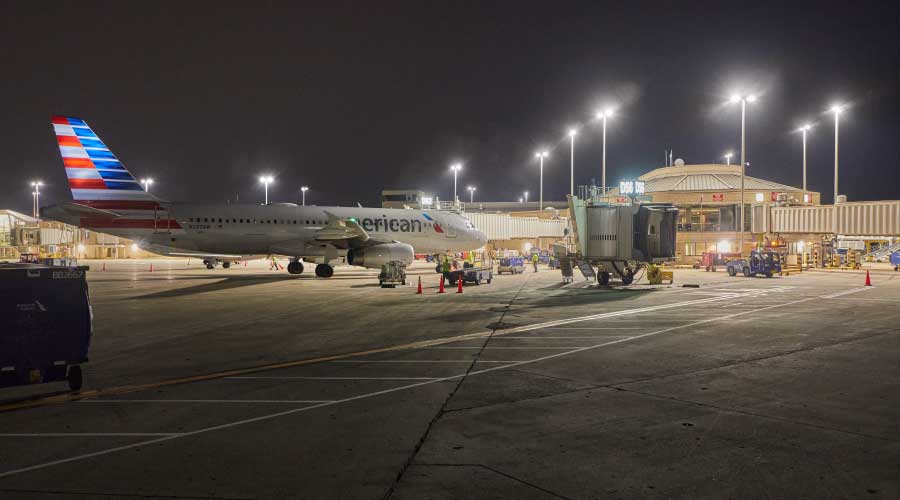Quality and Quantity Key to Outdoor Lighting
Someone walking up to a building at night is a standard way to build suspense in a movie. And no wonder: Our sight more than any other sense warns us of possible threats. So approaching a facility or walking through a parking lot after sunset can be unnerving if the outdoor lighting is poor.
But outdoor lighting should do more than just make people feel safe and secure. Good outdoor lighting should minimize light pollution and light trespass and should be energy efficient. And these days, there are plenty of products and technologies that make achieving those outcomes realistic.
Safety and security often come to mind in any discussion of outdoor lighting. Those two items address everything from how employees and visitors feel entering and exiting buildings and parking lots to having enough light on a building's exterior that it discourages potential burglars and vandals.
Building codes typically recommend that a permanent light fixture be outside of every exterior door and that it provide at least one footcandle. But more footcandles may be necessary.
Codes often require a minimum of five footcandles at the ground level around the perimeter of a building so that if someone or something approaches the building, they'll be conscious of the fact that people will be aware of their presence, says Joseph Rey-Barreau, an education consultant with the American Lighting Association and associate professor in the College of Design at the University of Kentucky.
Quantity and quality are the two key issues when it comes to outdoor lighting, says Mary Beth Gotti, manager of the GE Lighting Institute. Quantity is the amount of light — or number of footcandles — that makes people feel that they can see reasonably well, he says.
Quality of light has to do with how natural and normal colors appear. A good measure is the color rendering index, which ranges from 0 (extremely poor color) to 100 (color appears almost as it would in daylight). High-pressure sodium lights have a rating of 22. If a parking lot has high-pressure sodium lights, a dark blue car will be hard to distinguishing from a black car, Gotti says.
"So when you switch to other sources like metal halide or LEDs that have a color rendering index of at least 70, the colors look better," says Gotti. "The school of thought says if colors look better, people feel safer."
Reducing or eliminating glare can improve safety and security, especially in areas that are vulnerable to robberies, attacks or even vehicle traffic. If people in an area have light coming directly into their eyes, their visibility is greatly reduced.
The instinct for some people, for example, is to have a 1,000-watt wallpack in the area around an automated teller machine, says MJ Paul, vice president of brand management for Architectural Area Lighting. But, as individuals approach the ATM, their eyes are adjusting to much brighter lumen output and so it's the perfect opportunity for a burglar to sit in the dark and wait until someone approaches, Paul says. "So just throwing up more light doesn't help," he says. "You need to reduce the glare and help in the adjustment of the eyes."
"The challenge for the lighting industry regarding LEDs is no longer about light output, as it was a few years back, but rather about controlling the light," says Denis Lavoie, director of outdoor segment lighting for Philips Lighting.
Glare is a concern with LEDs (light emitting diodes). A solution, one which several lighting manufacturers tout, is the use of a reflector that controls where light shines. Depending on where the reflector is placed — to the side or behind the LED — the light is better focused to a particular area.
A product that helps aim a light beam downward, allowing an individual to see the effect of the light and not the light itself, will help control or eliminate glare, Gotti says. Cut-off fixtures, baffles and shields help to control the distribution of light, she says.
Related Topics:












